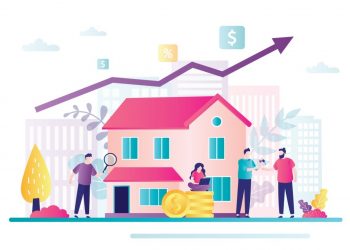The road to reeling in inflation will take a lot of work, and new reports from the U.S. Bureau of Labor Statistics (BLS) offer a glimpse as to why. While the consumer price index (CPI) shows a persisting downward trend in inflation, it also indicates that the pace of easing is cooling.
The latest CPI report shows that overall inflation increased by 6.4% in January—down from 6.5% in December—marking the seventh consecutive month of annual inflation decline since it peaked in June 2022.
Core inflation, which excludes volatile energy and food prices, climbed 5.6% in January, dropping from 5.7% in December. Core prices rose 0.4% month-to-month, based on the report.
Monthly, the CPI rose by 0.5% in January, with the cost of shelter playing the most significant role in the gain, while the price of food and gas also contributed.
The shelter index continued to rise in January, climbing 0.7% month-to-month and 7.9% annually. This accounted for nearly 60% of the total increase in Core inflation.
Despite further declines in inflation heading into the new year, onlookers from the real estate sector note that January’s easing was lower than expected.
“Today’s report suggests that the downward trend in inflation may be bumpier than we had hoped,” said Dr. Lisa Sturtevant, chief economist at Bright MLS. “It means that the Federal Reserve will push forward with rate hikes through the spring, which will increase borrowing costs for consumers and businesses.”
January’s inflation report comes less than two weeks after the Federal Reserve made a hopeful move by announcing a 25 basis-point rate hike in its February meeting. The move signaled confidence among Fed officials that it was making up ground as it continued its efforts to reel in elevated inflation.
At the time, Sturtevant thought the decision marked a pivot from the aggressive approach Fed officials took in recent months following inflation surpassing 9% in June.
Tuesday’s inflation report comes on the heels of adjustments to fourth quarter CPI numbers, which Sturtevant thinks shows that the pace of “disinflation” at the end of 2022 was slower than experts anticipated.
“It also follows an exceptionally strong January jobs report and rising consumer confidence, which propped up consumer demand,” she said.
Sturtevant also acknowledged the impacts of inflation and the Fed’s response to the housing market thus far.
“Home prices have risen much faster than incomes over the past three years,” she explained. “The Fed’s rate increases, which have led to higher mortgage rates, have made the cost of buying a home even more costly.
“Slowing demand in the housing market was part and parcel of the Fed’s strategy designed to cool consumer demand to bring down inflation,” Sturtevant continued. “But as the cost of borrowing to purchase a home rises, it disproportionately impacts young, prospective first-time homebuyers and widens the already sizable wealth gap in the U.S.”
Sturtevant thinks that the housing market has “bottomed out” in many markets nationwide and that buyers are returning at a time when low inventory and stiff competition will be prominent factors moving forward.
“Those fortunate enough to own a home who have seen their equity rise to record levels and who have locked in historically low mortgage rates are sitting pretty,” she said. “However, individuals and families who are hoping to buy their first home will find a difficult—and expensive—process awaiting them in the spring housing market.”












